-
 Bitcoin
Bitcoin $106,754.6083
1.33% -
 Ethereum
Ethereum $2,625.8249
3.80% -
 Tether USDt
Tether USDt $1.0001
-0.03% -
 XRP
XRP $2.1891
1.67% -
 BNB
BNB $654.5220
0.66% -
 Solana
Solana $156.9428
7.28% -
 USDC
USDC $0.9998
0.00% -
 Dogecoin
Dogecoin $0.1780
1.14% -
 TRON
TRON $0.2706
-0.16% -
 Cardano
Cardano $0.6470
2.77% -
 Hyperliquid
Hyperliquid $44.6467
10.24% -
 Sui
Sui $3.1128
3.86% -
 Bitcoin Cash
Bitcoin Cash $455.7646
3.00% -
 Chainlink
Chainlink $13.6858
4.08% -
 UNUS SED LEO
UNUS SED LEO $9.2682
0.21% -
 Avalanche
Avalanche $19.7433
3.79% -
 Stellar
Stellar $0.2616
1.64% -
 Toncoin
Toncoin $3.0222
2.19% -
 Shiba Inu
Shiba Inu $0.0...01220
1.49% -
 Hedera
Hedera $0.1580
2.75% -
 Litecoin
Litecoin $87.4964
2.29% -
 Polkadot
Polkadot $3.8958
3.05% -
 Ethena USDe
Ethena USDe $1.0000
-0.04% -
 Monero
Monero $317.2263
0.26% -
 Bitget Token
Bitget Token $4.5985
1.68% -
 Dai
Dai $0.9999
0.00% -
 Pepe
Pepe $0.0...01140
2.44% -
 Uniswap
Uniswap $7.6065
5.29% -
 Pi
Pi $0.6042
-2.00% -
 Aave
Aave $289.6343
6.02%
What are the steps in a typical ICO process?
A successful ICO involves meticulous planning, from legally compliant whitepaper creation and secure smart contract development to robust marketing, token distribution, and sustained post-ICO community engagement.
Mar 14, 2025 at 05:00 am
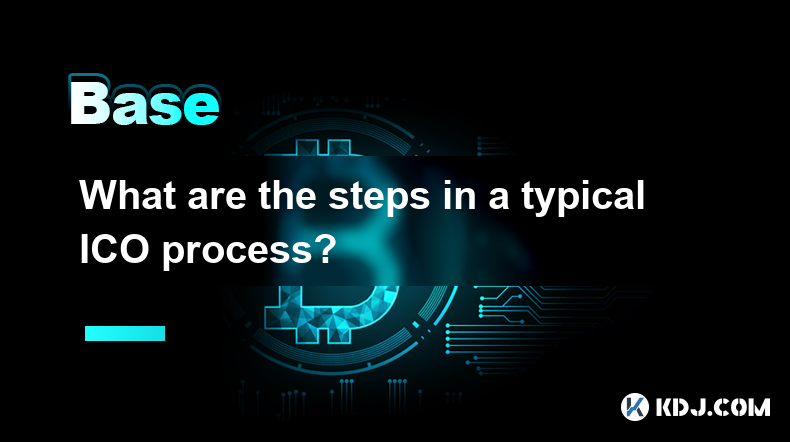
Key Points:
- ICOs involve several crucial steps, from idea conception and whitepaper creation to token distribution and post-ICO activities.
- Legal and regulatory compliance is paramount throughout the entire ICO process.
- A robust marketing strategy is essential for attracting investors and ensuring successful fundraising.
- Security audits and smart contract development are critical to mitigating risks and ensuring the project's longevity.
- Post-ICO activities, including community building and project development, are vital for long-term success.
What are the steps in a typical ICO process?
Launching a successful Initial Coin Offering (ICO) requires meticulous planning and execution. The process is complex and involves several distinct stages. Understanding each step is crucial for both project teams and potential investors. Let's delve into the typical steps involved.
1. Idea Conception and Whitepaper Development:
This initial stage involves formulating a clear and compelling project idea. This includes defining the problem the project solves, the proposed solution, the target market, and the overall vision. A detailed whitepaper is then drafted, outlining the project's technical specifications, tokenomics, team, and roadmap. The whitepaper serves as the cornerstone of the ICO, attracting potential investors and explaining the project's value proposition.
2. Legal and Regulatory Compliance:
Before proceeding, it's vital to understand and comply with all applicable securities laws and regulations. This involves conducting thorough legal due diligence, ensuring the ICO structure complies with relevant jurisdictions, and potentially seeking legal counsel specialized in cryptocurrency and blockchain technology. Failure to comply can lead to severe legal repercussions.
3. Smart Contract Development and Security Audit:
The core of most ICOs is a smart contract, which governs the token's functionality and distribution. A secure and well-audited smart contract is paramount. Employing experienced developers and reputable security auditing firms is crucial to prevent vulnerabilities and potential exploits that could compromise the project and investor funds.
4. Token Design and Allocation:
Defining the token's characteristics—its utility, supply, distribution mechanism, and any associated rights—is a critical step. This involves determining the token's purpose within the ecosystem, how it will be used, and how many tokens will be created and allocated to different stakeholders (team, advisors, investors, etc.). A well-designed token model is vital for attracting investors and ensuring the project's long-term viability.
5. Marketing and Pre-ICO Activities:
Generating hype and interest before the ICO launch is essential for success. This involves developing a comprehensive marketing strategy that utilizes various channels, including social media, online advertising, content marketing, and community building. Pre-ICO activities, such as private sales or pre-sales, can help gauge investor interest and secure early funding.
6. ICO Launch and Token Distribution:
Once all the preparations are complete, the ICO can be launched. This involves setting up a platform for token sales, managing the fundraising process, and ensuring the secure and timely distribution of tokens to investors. This stage requires robust infrastructure and careful monitoring to handle a potentially large influx of transactions.
7. Post-ICO Activities:
The work doesn't end with the ICO's conclusion. Post-ICO activities are crucial for building a thriving community, delivering on the project's roadmap, and maintaining investor trust. This includes ongoing communication, software development, partnerships, and addressing community feedback. Maintaining transparency is key to long-term success.
8. Exchange Listing (Optional):
Listing the token on cryptocurrency exchanges allows for increased liquidity and accessibility for investors. However, this step involves additional processes, including exchange applications and compliance requirements. Successful listing on reputable exchanges enhances the token's visibility and trading volume.
9. Ongoing Project Development and Community Engagement:
Sustaining momentum after the ICO requires continuous development and active community engagement. This includes releasing updates, addressing community concerns, and delivering on the promises outlined in the whitepaper. Consistent communication and transparency are essential for building and maintaining a strong community.
Common Questions:
Q: What are the risks associated with ICOs?
A: ICOs carry inherent risks, including the potential for scams, fraudulent projects, regulatory uncertainty, and market volatility. Thorough due diligence and careful investment are crucial.
Q: How do I choose a legitimate ICO?
A: Look for projects with experienced teams, transparent whitepapers, secure smart contracts (with audits), strong community engagement, and a clear roadmap. Be wary of projects with unrealistic promises or unclear information.
Q: What is the difference between an ICO and an STO?
A: ICOs typically offer tokens without regulatory oversight, while STOs (Security Token Offerings) are structured as securities, adhering to stricter regulatory frameworks.
Q: Are ICOs legal everywhere?
A: The legal status of ICOs varies significantly across jurisdictions. Some countries have embraced them, while others have imposed restrictions or outright bans. It's crucial to understand the regulatory landscape in your relevant jurisdiction.
Q: What are the benefits of participating in an ICO?
A: Potential benefits include early access to potentially high-growth projects, lower initial investment costs compared to later stages, and the opportunity to participate in a new technology or innovation. However, these benefits come with substantial risk.
Q: What are the common mistakes made during an ICO?
A: Common mistakes include poor marketing, insufficient legal compliance, inadequate security audits, unrealistic tokenomics, and a lack of post-ICO planning.
Disclaimer:info@kdj.com
The information provided is not trading advice. kdj.com does not assume any responsibility for any investments made based on the information provided in this article. Cryptocurrencies are highly volatile and it is highly recommended that you invest with caution after thorough research!
If you believe that the content used on this website infringes your copyright, please contact us immediately (info@kdj.com) and we will delete it promptly.
- Bitcoin's Balancing Act: Navigating Geopolitical Tensions to Eye Record Highs
- 2025-06-19 00:25:12
- Crypto ATMs Banned in Washington City: What's the Deal?
- 2025-06-19 00:45:13
- BlockDAG, Monero, Bittensor: Navigating the 2025 Crypto Landscape, New Yorker Style
- 2025-06-19 01:25:13
- Cold Wallet, TAO, NEAR: Navigating Crypto Instability with Security
- 2025-06-19 01:10:13
- Cold Wallet: Your Fortress of Token Gains Amidst In-Wallet Trade Frenzy
- 2025-06-19 00:45:13
- AVAX Recovery: Short-Term Momentum or Bearish Trap?
- 2025-06-19 01:12:13
Related knowledge
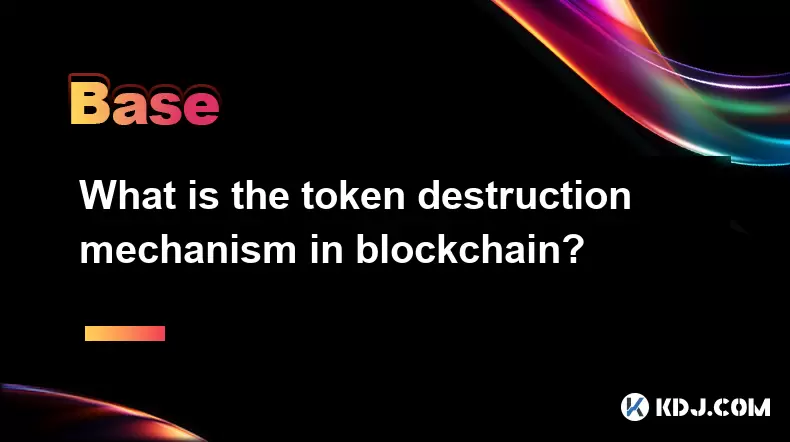
What is the token destruction mechanism in blockchain?
Jun 15,2025 at 12:14pm
Understanding Token Destruction in BlockchainToken destruction, often referred to as token burning, is a mechanism used within blockchain ecosystems to permanently remove a certain number of tokens from circulation. This process typically involves sending tokens to an irretrievable wallet address — commonly known as a burn address or eater address — whi...
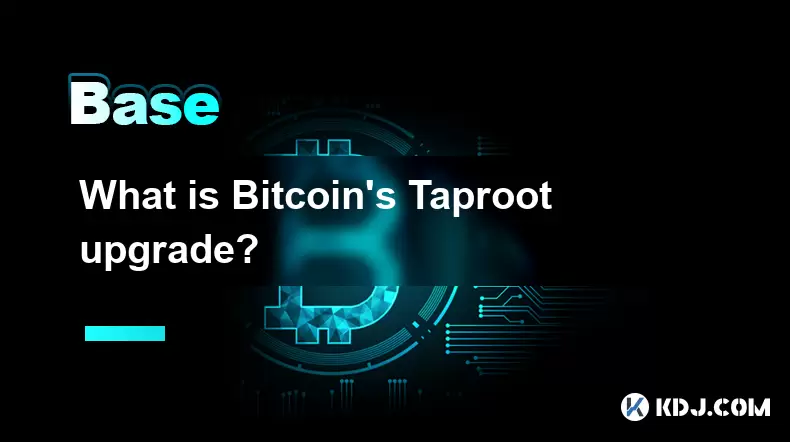
What is Bitcoin's Taproot upgrade?
Jun 14,2025 at 06:21am
Understanding the Basics of Bitcoin's Taproot UpgradeBitcoin's Taproot upgrade is a significant soft fork improvement introduced to enhance privacy, scalability, and smart contract functionality on the Bitcoin network. Activated in November 2021, Taproot represents one of the most notable upgrades since SegWit (Segregated Witness) in 2017. At its core, ...
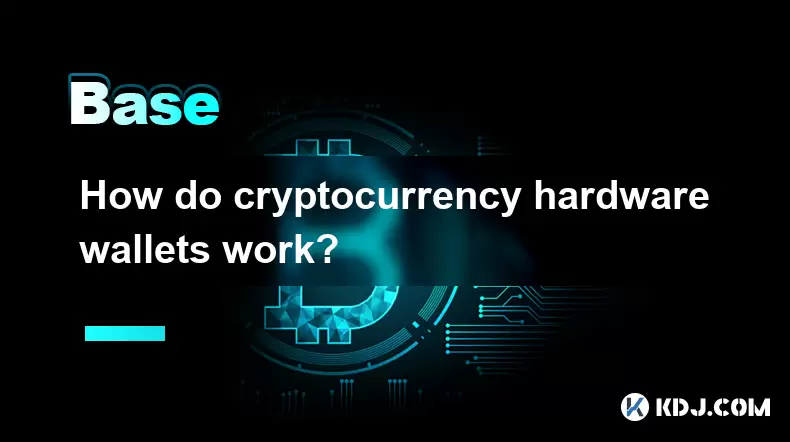
How do cryptocurrency hardware wallets work?
Jun 14,2025 at 11:28am
Understanding the Basics of Cryptocurrency Hardware WalletsCryptocurrency hardware wallets are physical devices designed to securely store users' private keys offline, offering a high level of protection against online threats. Unlike software wallets that remain connected to the internet, hardware wallets keep private keys isolated from potentially com...
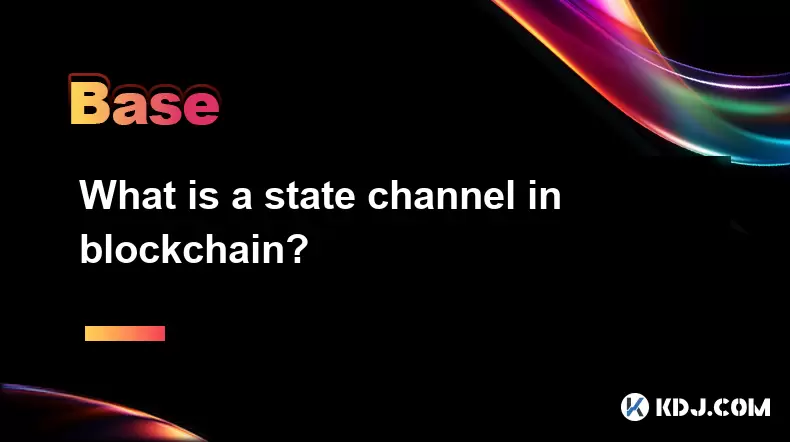
What is a state channel in blockchain?
Jun 18,2025 at 02:42am
Understanding the Concept of a State ChannelA state channel is a mechanism in blockchain technology that enables participants to conduct multiple transactions off-chain while only interacting with the blockchain for opening and closing the channel. This technique enhances scalability by reducing congestion on the main chain, allowing faster and cheaper ...
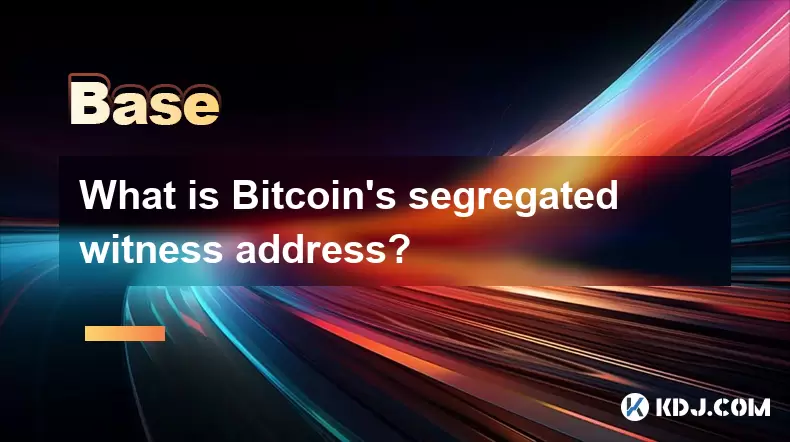
What is Bitcoin's segregated witness address?
Jun 16,2025 at 04:14pm
Understanding the Concept of Segregated Witness (SegWit)Bitcoin's Segregated Witness (SegWit) is a protocol upgrade implemented in 2017 to improve the scalability and efficiency of Bitcoin transactions. SegWit addresses were introduced as part of this upgrade, designed to separate (or 'segregate') signature data from transaction data. This separation al...
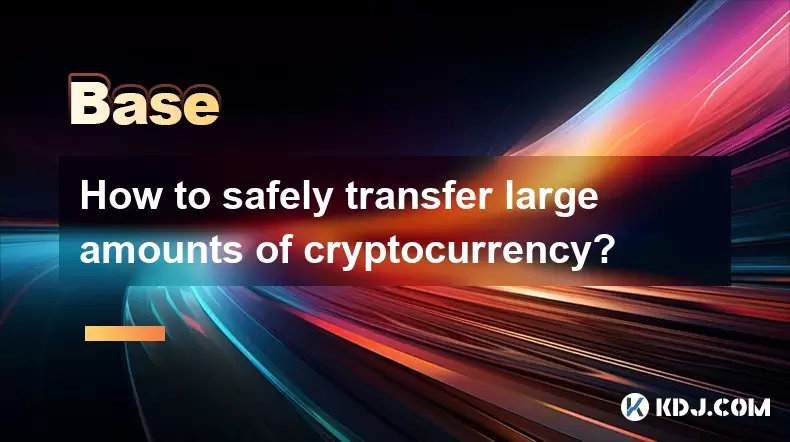
How to safely transfer large amounts of cryptocurrency?
Jun 17,2025 at 03:35pm
Understanding the Risks Involved in Transferring Large AmountsTransferring large amounts of cryptocurrency involves a unique set of risks that differ from regular transactions. The most critical risk is exposure to theft via compromised private keys or phishing attacks. Additionally, network congestion can lead to delayed confirmations, and incorrect wa...

What is the token destruction mechanism in blockchain?
Jun 15,2025 at 12:14pm
Understanding Token Destruction in BlockchainToken destruction, often referred to as token burning, is a mechanism used within blockchain ecosystems to permanently remove a certain number of tokens from circulation. This process typically involves sending tokens to an irretrievable wallet address — commonly known as a burn address or eater address — whi...

What is Bitcoin's Taproot upgrade?
Jun 14,2025 at 06:21am
Understanding the Basics of Bitcoin's Taproot UpgradeBitcoin's Taproot upgrade is a significant soft fork improvement introduced to enhance privacy, scalability, and smart contract functionality on the Bitcoin network. Activated in November 2021, Taproot represents one of the most notable upgrades since SegWit (Segregated Witness) in 2017. At its core, ...

How do cryptocurrency hardware wallets work?
Jun 14,2025 at 11:28am
Understanding the Basics of Cryptocurrency Hardware WalletsCryptocurrency hardware wallets are physical devices designed to securely store users' private keys offline, offering a high level of protection against online threats. Unlike software wallets that remain connected to the internet, hardware wallets keep private keys isolated from potentially com...

What is a state channel in blockchain?
Jun 18,2025 at 02:42am
Understanding the Concept of a State ChannelA state channel is a mechanism in blockchain technology that enables participants to conduct multiple transactions off-chain while only interacting with the blockchain for opening and closing the channel. This technique enhances scalability by reducing congestion on the main chain, allowing faster and cheaper ...

What is Bitcoin's segregated witness address?
Jun 16,2025 at 04:14pm
Understanding the Concept of Segregated Witness (SegWit)Bitcoin's Segregated Witness (SegWit) is a protocol upgrade implemented in 2017 to improve the scalability and efficiency of Bitcoin transactions. SegWit addresses were introduced as part of this upgrade, designed to separate (or 'segregate') signature data from transaction data. This separation al...

How to safely transfer large amounts of cryptocurrency?
Jun 17,2025 at 03:35pm
Understanding the Risks Involved in Transferring Large AmountsTransferring large amounts of cryptocurrency involves a unique set of risks that differ from regular transactions. The most critical risk is exposure to theft via compromised private keys or phishing attacks. Additionally, network congestion can lead to delayed confirmations, and incorrect wa...
See all articles

























































































